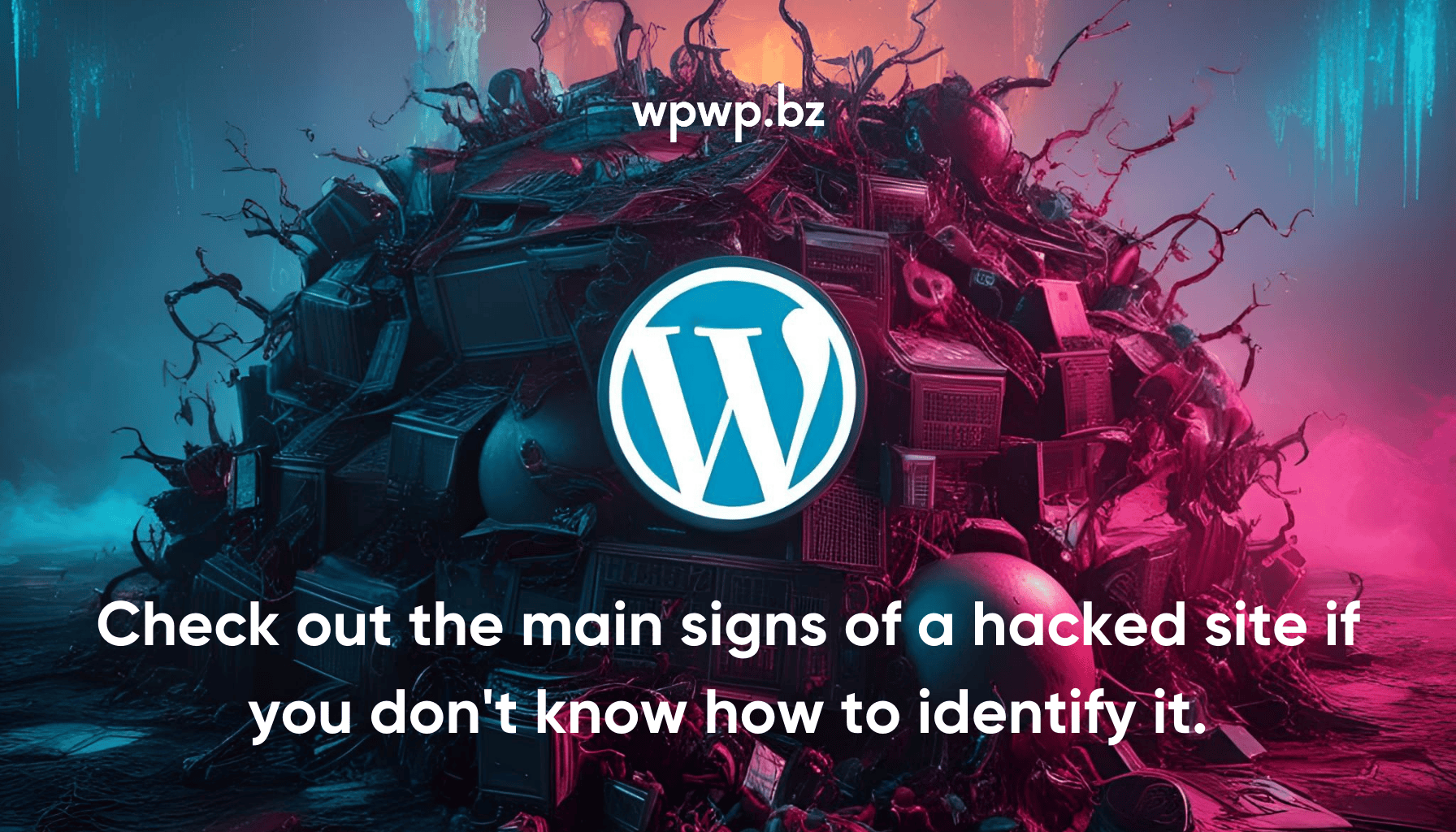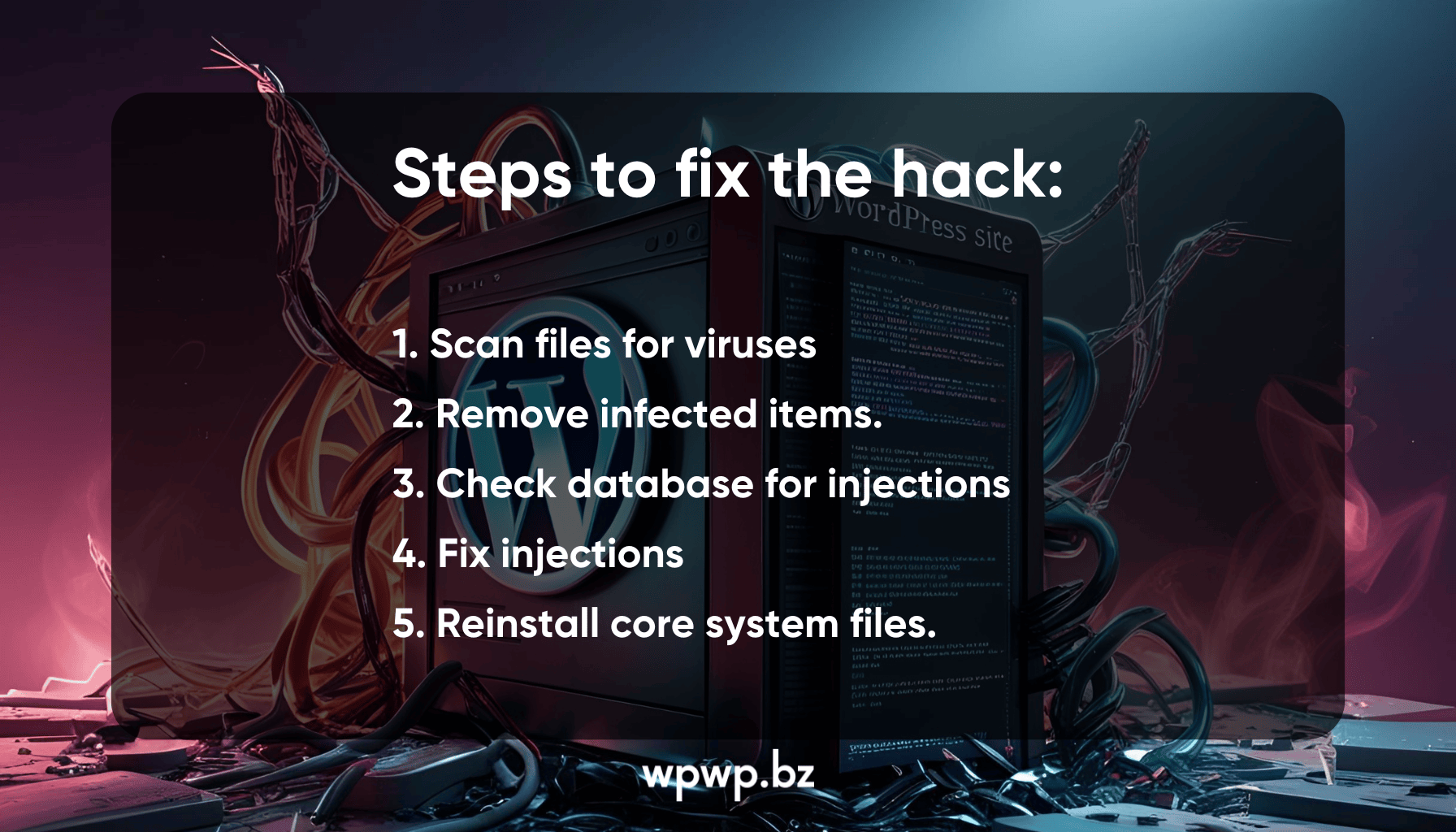
Even the best-secured WordPress site can become a target for hackers. If your WordPress website is hacked, it’s important to detect it early and take steps to fix the problem. We’ll tell you what to do to avoid losing business due to unauthorized intervention.

Signs: How to Recognize if Your WordPress Site is Hacked
There are some common signs that can help you understand that hackers have bypassed your protection and are interfering with your site. Learn and remember:
- New users and changes. If you see new users that you didn’t add, or entries or changes that you didn’t make, it’s likely the work of hackers WordPress.
- Redirects. If users are redirected to other web resources when they visit your site, it’s a sign of third-party interference.
- Warning. If you receive a warning message when you access your site through browsers, it’s likely that your site has been hacked or contains malicious software.
- Performance issues. When your site frequently stops working for no reason or its loading speed drops dramatically, it’s hacked.
- Extra syntax in the code. If your site is hosted by a WordPress website development company, programmers will notice unnecessary code in JavaScript or other syntax.
In order not to track the signs of a hacked site, you can use special tools. They detect malware and site security breaches. Pay attention to the following tools:
- Sucuri SiteCheck;
- Wordfence Security;
- MalCare;
- Google Search Console;
- VirusTotal.
Why should you use these tools? They check the site in advance and eliminate any threats. If you cannot install plugins yourself, the WPWP.BZ team can easily help with this!
WordPress Website Hacked: Next Steps
Panic is not the best solution if your WordPress site has been hacked. What we recommend doing to quickly regain control and minimize damage from attackers:
- Notifying site visitors. We recommend creating a page that will notify you that your site has been hacked. This will prevent users from leaving their personal information.
- Self-service mode. Install a self-service plugin to maintain your site’s performance.
Scanning: Detecting Vulnerabilities and Malware
Scanning is a way to identify the cause of the hack and eliminate its consequences. We’ll walk you through what to do step by step:
- Plugins. They will help you scan your site. You can use tools like Wordfence, MalCare, or iThemes Security.
- File verification. If you have knowledge of WordPress, you can manually check the files for compliance with the clean version of WordPress. If not, we recommend contacting specialists.
Change Passwords
Changing passwords helps prevent attackers from returning after removing viruses and malware from your site. We recommend changing passwords for:
- your site’s admin panel;
- your databases;
- your email accounts.
In addition, check the list of users on your WordPress site. If you see any new ones, delete them.

WordPress Site Hacked: How to fix
A complete cleanup and restoration of the WordPress site is the next step after a hack. How can it be restored from a backup? Let’s take a look below:
- Search. You need to find the latest backup without malicious code. It may be better to choose the one that was made a few days before the hack.
- Restore. You can do this using special plugins. We recommend using UpdraftPlus or BackupBuddy.
What to do if there is no backup of the site? In this case, to fix a hacked WordPress site, you need to perform the following steps:
- Manual cleaning. Scan all files for viruses using plugins.
- Delete infected files or replace them with original versions without viruses.
- Check the database for injections and fix them if there are any.
- Reinstall the core WordPress system files.

Future Hacker Attacks: How to Prevent WordPress Hacking
In order not to restore your site from a backup copy, not to get rid of viruses, you can prevent hacker attacks. Let’s look at how you can do this:
- Using a firewall. This is the first stage of protection. Set up a limit on the number of login attempts and block IP addresses if suspicious activity is detected.
- Two-factor authentication. After installing it, users will have to enter a temporary code that will come to their phone. This reduces the risk of attackers logging in.
- Regular updates. It is necessary to regularly update the site, plugins and themes. Outdated versions may contain vulnerabilities that allow attackers to easily hack the web resource.
- Secure hosting. Your site is stored on the hosting. We recommend choosing a “foundation” with built-in virus protection.
Summary
Site security is no less important than its functionality. If it seems to you that your web resource is not sufficiently protected, you may want to do an audit. Our WordPress development team will analyze your site and provide a report highlighting any vulnerabilities, if any. Update your site regularly, scan for viruses, and enjoy its smooth operation!


